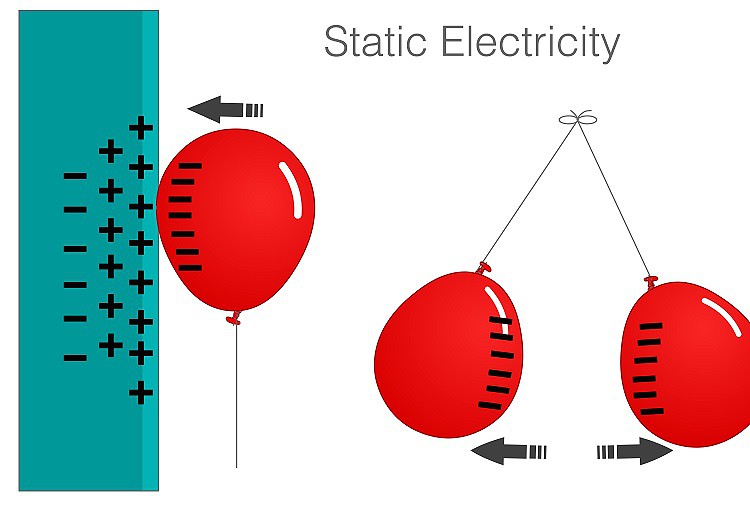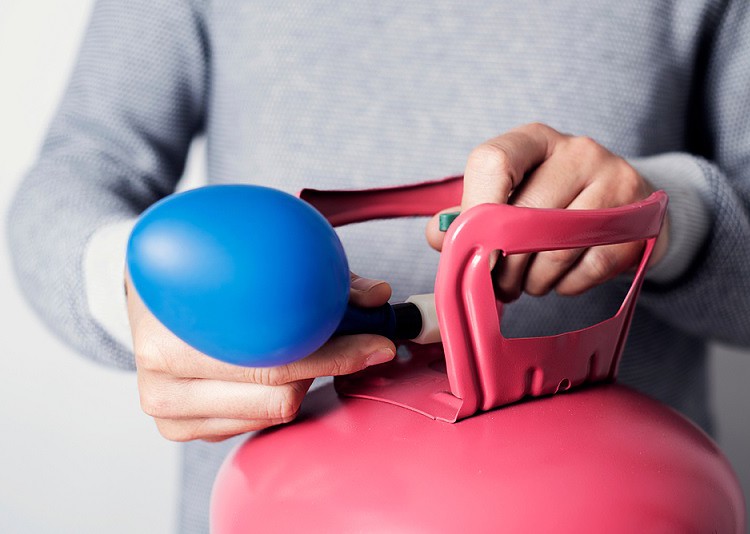No.
At least without a little help, they won’t, but luckily there are a few other ways to make balloons float.
If a balloon is filled with the same air outside the balloon, the relatively denser external membrane (usually and hereafter referred to as plastic) will bring the entire balloon crashing down.
To overcome this excess weight of the plastic, we will need to learn to understand the principles of buoyancy and eventually turn them to our advantage.
With plenty of ideas from hydrogen gas to static electricity, let’s jump into the myriad possibilities of helping balloons defy gravity.
Table of Contents
Hydrogen and Helium

Normally, balloons are filled with Helium, one of the few lighter elements than the surrounding air (which is primarily composed of nitrogen and oxygen).
With the lighter element contained within, the balloon as a system becomes lighter than air on average.
In a helium filled balloon, instead of the balloon being pulled up it actually rises when the air around it is pulled down harder than the helium.
In a strange way instead of opposing gravity, buoyancy is just another expression of the same force as the surrounding air shoves the balloon up and out of the way in its attempt to reach the ground.
With this in mind, a few options become open to us. The first would be to look for another element lighter than air.
Luckily Hydrogen gas is another such element particularly suited to the task (there are actually a total of thirteen other compounds lighter than air, but some like Acetylene are simply too explosive and for others, like Water Vapor, filling a balloon with them seems… ambitious).
That leaves us with Hydrogen. Easily accessible and highly flammable, filling a balloon with it may not be altogether difficult.
It also might not be the best idea. Any heat from candles to cigarettes can cause these balloons to erupt into explosive flames. DO NOT ALLOW CHILDREN NEAR BALLOONS FILLED WITH HYDROGEN GAS.
With those warnings in mind, you may want to fill a balloon with Hydrogen as a fun experiment. Luckily, doing so is surprisingly easy and can be accomplished with materials you have around the house.
To fill such a balloon you will need a glass bottle with a narrow neck. Placing the bottle in a safe and well ventilated area, fill the bottle with a few scraps of aluminum foil and a tablet or two of sodium hydroxide .
When you pour in a half cup of water and pull the balloon over the top of the bottle, the balloon will quickly stand up straight, filling with hydrogen gas in just a few minutes.
Hot Air and Argon

Instead of making the air inside a balloon lighter, it is equally possible to fill a balloon with simple air and then manipulate its environment rather than bothering with the balloon’s contents.
While the simplest expression of this is placing the balloon in water and watching it float to the surface, a few other options are available without needing to resort to turning your living room into an aquarium.
The next simplest approach, if perhaps equally useless, is to fill up a room with Argon gas.
Argon is a noble gas famous for its high molecular weight and low reactivity, making it perfect for such a purpose. Unfortunately, it is also distinctly not oxygen so breathing would quickly become a problem in such a room (more information).
Fortunately, there is another way that will work in certain situations, one that utilizes air temperature.
While a balloon filled with heated air will quickly cool and fall, if hot air currents can be manipulated correctly, the balloon can be placed in a stable position a few feet off the ground.
This approach can take a few different forms. If you have ground-oriented heating vents moving the balloon around above the fixture should allow you to find a place where the balloon can float with surprising stability.
Barring that, you may be able to tie a balloon above a fireplace and let the smoke flow around it and keep it up, though I haven’t actually tried so I can’t vouch for its validity.
Static Electricity

Because of how light balloons are, often another force can support them even when their weight does slightly exceed that of the surrounding air. This method, unlike many of the others, is actually doable in a home setting.
By rubbing a balloon against another surface, ideally a sofa or hair, you can ignite a balloon with an electrical charge.
When you do so electrons transfer into the balloon, giving it a negative charge that will attract many household objects that harbor a latent positive charge.
Once the charge is established the balloon will stick to ceilings, lamps, sofa’s, or most anything else you attach it to. The charge only lasts a few minutes though before it begins to dissipate, so don’t try and use it long term.
Tape, Glue, and Yarn

Sometimes you don’t need the balloons to necessarily float, just to look nice as decorations. In that case, beautiful balloon arrangements formed by tying their ends together with a bit of yarn can be formed and taped in the corners of the room.
If this is your goal, a quick scroll through a balloon arrangement Pinterest board (like this one) will give you an amazing starting point for your designs.
By incorporating various sizes and colors of balloons— even throwing in a few tied balloon animals— your creativity is the only limit to the stunning custom arrangements you can make for your events.
The simplest of these are flowers formed by tying five or six balloon ends together, but also popular are columns and arches formed from alternating layers of balloons.
With these as a base and a bit of creativity hundreds of beautiful patterns are possible without any helium.
Good Old-Fashioned Helium

While many of these methods make fun experiments, at the end of the day, when it comes to making balloons float, there is a reason that helium is the industry standard.
Between its inexpensive production, how safely it can be employed, and its relatively slow leak rate no other method of buoyancy quite compares.
Stay safe and happy ballooning!
Isilee

I created this site to help people – to help you – with your boat problems. Instead of helping one person at a time, I want this website to be the “one-stop-shop” for everyone’s boating concerns. Read more.

